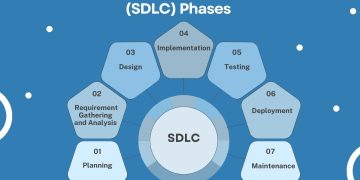As more and more people work from home, they are now the first line of defence against cyberattacks. It has become more common for people to work from home and in hybrid work environments. This has raised new security concerns for small businesses, which often don’t have the same IT security resources as larger companies.
With so many people working from home during the coronavirus pandemic, IT leaders must think about all of the tools they have available to protect their users’ devices. Some of the most powerful cybersecurity defences are tools called next-generation endpoint security tools.
Endpoint Protection Technology
New endpoint protection technologies go beyond the simple, signature-based antivirus detection methods of the past. They are increasingly using artificial intelligence and machine learning to improve security.
These solutions still use good signature detection, but they also use new techniques, like endpoint detection and response (EDR), behavioural analysis, sandboxing, predictive analytics, and threat intelligence.
Michael Sorokin is a solution architect at CDW who focuses on security technologies. In a blog post, he says that CISOs and other technology leaders are more interested than ever in next-generation endpoint protection solutions. “IT leaders who haven’t already deployed NGEP technology are hearing about it from their peers and are eager to put solutions in place.”
A new type of endpoint security is called “next-generation endpoint security.”
Signature-based security, which is base on comparing threats to a database of malicious code that has already been found, still catches about 70 to 80 percent of cybersecurity threats, says Arnie Lopez, vice president of worldwide systems engineering at McAfee, a company that makes security software. That’s not enough to deal with today’s threats.
A cybersecurity expert at CDW says that next-generation endpoint protection tools give businesses the ability “to report on security incidents in great detail, use intelligence about threats from all over the world, and work well with other tools in an organization’s cyber defence.”
Next-generation endpoint security tools give businesses a lot more information about what happened when they had a security breach. This is how a next-generation endpoint solution can figure out what the attacker is trying to do. Falcon says that by looking into the specifics of an attack, like who the target is and what the attacker is trying to do, the next-generation solution can figure out what the attacker is trying to do. It is with this information that an organisation can prioritise the mitigation of high-risk flaws.
Falcon also says that newer endpoint protection tools use threat intelligence to help them find attacks and build stronger defences. Next-generation endpoint security tools can also be use to automate and orchestrate a business’s defences and work well with other cybersecurity tools. Next-generation endpoint solutions can help an IT team get a better picture of how well a company is protecting itself, Falcon says.
Old Endpoint Security vs. Traditional Endpoint Security: Which is better?
Traditional endpoint security solutions rely a lot on a signature database, but keeping such databases up to date in a world where threats are always changing is becoming more and more difficult.
It also takes some time for the threat signatures to reach each of the end points. Artificial intelligence and machine learning can be use to help with real-time security, which can help with that.
Next-generation endpoint security tools that have access to real-time threat intelligence can analyse this information and send out updates to users’ endpoints right away. This allows IT security leaders at government agencies to block IP addresses, update malware signatures, and learn about new threats quickly, allowing them to quickly spot new threats.
Organizations need to be more careful about how they figure out what is a threat, says Lopez. They need to look at data from not just endpoints like laptops and mobile devices, but also from the network edge, secure web gateways, firewalls, and email getaways. This is how agencies can use next-generation endpoint security tools: They can look for things like command and control server activity that might not be visible on an endpoint, and then feed this information into their telemetry so that they can make better security choices.
EDR
Another part of next-generation endpoint security is EDR, which goes beyond simple detection of a security breach and manages an active response that tries to contain the damage, isolate the affected systems, and get things back to normal as quickly as possible.
EDR solutions include a client that is always doing anti-virus, firewall security, and intrusion prevention, as well as solutions that will act quickly if a threat is found.
If you want to keep your computer or smartphone safe at home, Lopez says you should use next-generation end point tools. The people who work for the company have their own computers or laptops that are provide by the company. They also sometimes have to join from tablets or other mobile devices. What this means: “So, having mobile capabilities for your next-generation endpoint security is a big part of that.”























![To Increase YouTube Subscribers Must Use These Service Provider [New]](https://businessleed.com/wp-content/uploads/2022/11/To-Increase-YouTube-Subscribers-Must-Use-These-Service-Provider-New-360x180.jpg)














